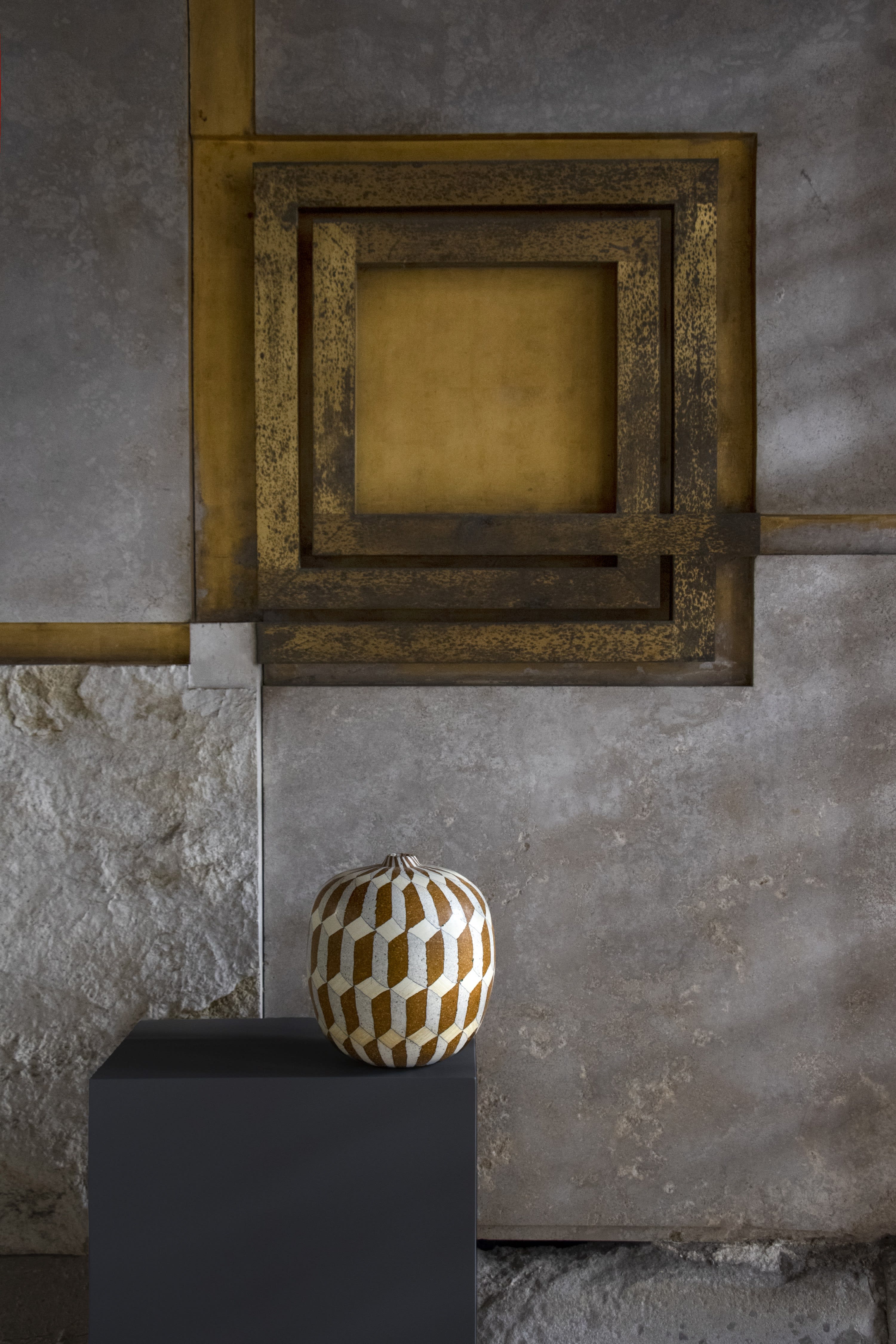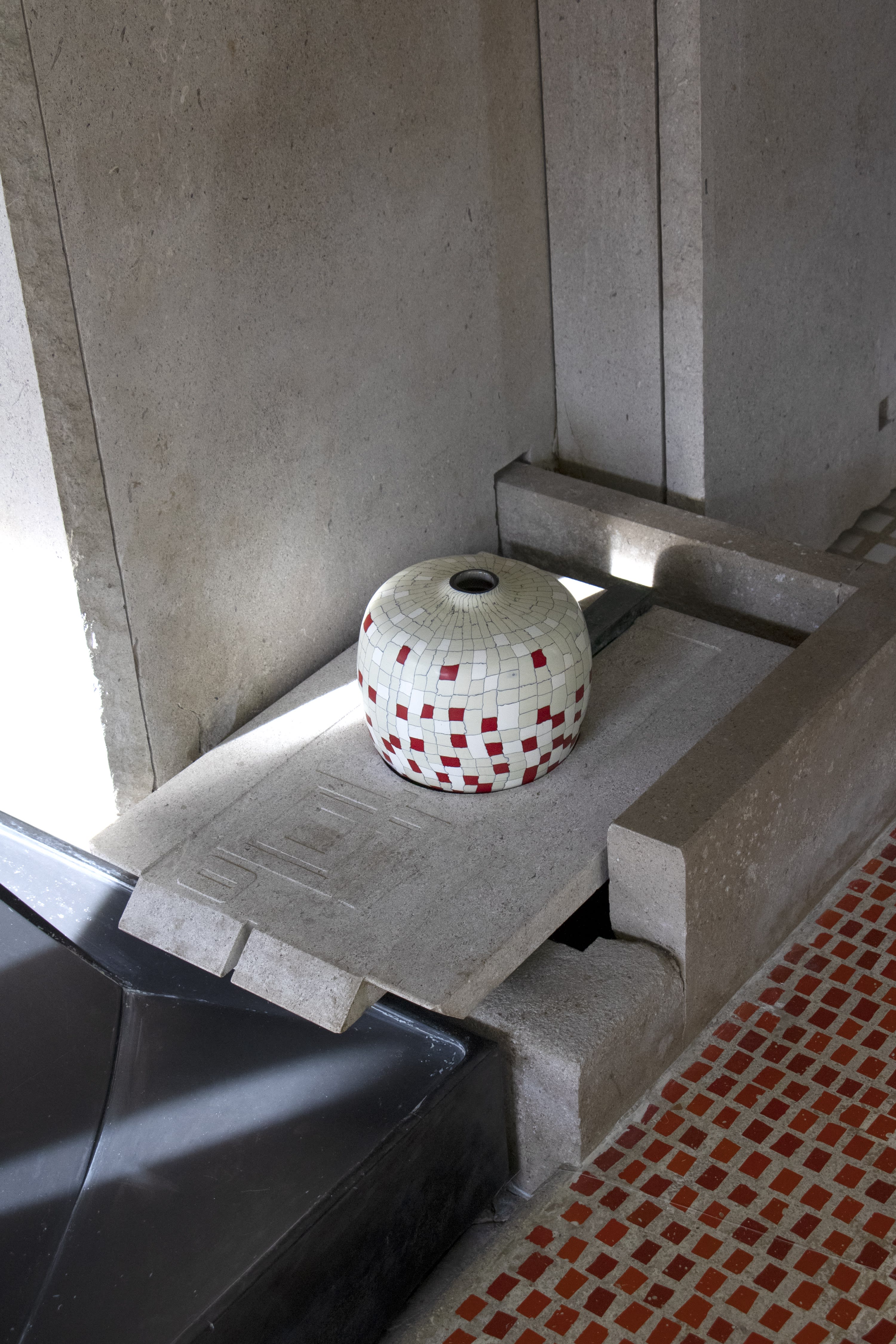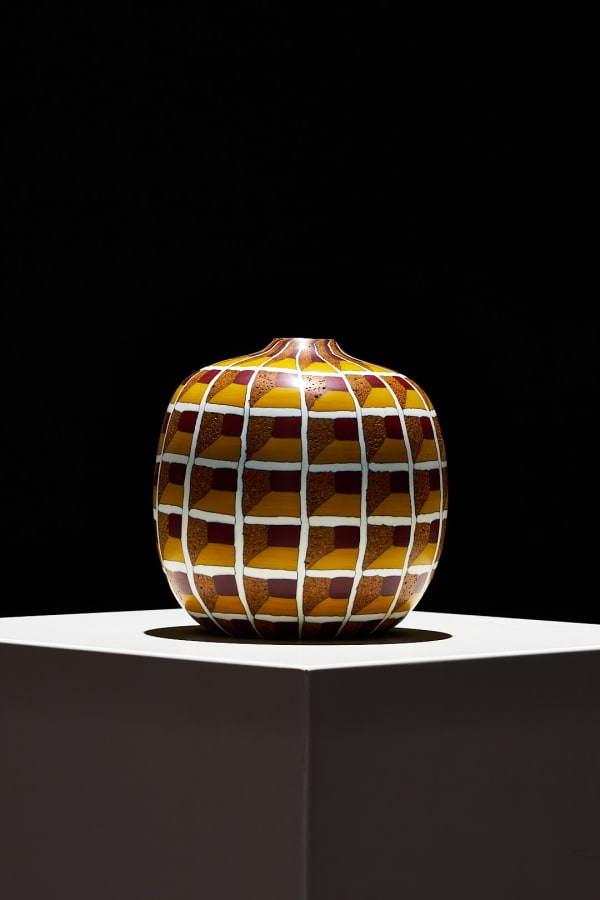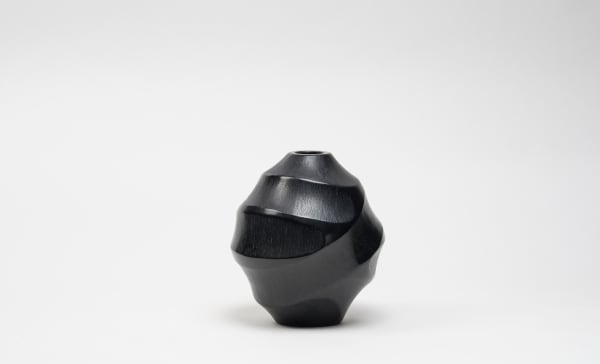Massimo Micheluzzi, New Works: Featuring Works from Negozio Olivetti by Carlo Scarpa
-
Overview
Exhibition opens April 11, 2024.
- Opening Reception: April 11, 6 PM to 8 PM.
- All visitors are welcome: Mon.—Sat. 11 AM to 6 PM.
- Private viewing by appointment only.
Negozio Olivetti in-situ images courtesy of Adriano Cisani, Bianca Vannucchi, and Massimo Micheluzzi.
-
Director's Letter

Italy and Japan
— Shoko Aono, April 2024
Ippodo Gallery NY presents two Italian Venetian artists this spring.
Massimo Micheluzzi begins in April, followed by Laura de Santillana in May.
Italy and Japan. Surrounded by seas, and stretching similarly great lengths from the north to the south, the two are both mountainous lands that share characteristics of geographical boundaries and climates.
In the 13th century, Marco Polo revealed Japan (‘Zipangu’) to the peoples of the Italian Peninsula; the so-called "golden land" far to the east, from Polo’s Record of Eastern Views, left a deep impression on the Europeans, but it was not until the 16th century when the first Japanese mission saw the vividly alien world of Venice with their own eyes.
The two countries differ dramatically in their histories and cultures. Yet, I have always been inexplicably connected to Italy. Somehow, I long for those differences while simultaneously recognizing within me a kinship to Italians and the land of Italy.
For many minds, the two are diametrically opposed philosophically; Italy has individual passion, eccentric creativity, fiery pride, and spontaneous spirit. Japanese values emphasize ‘wa’: social unity, restraint, efficiency, and organization.Despite these competing characteristics, I believe a sympathy exists between the fine elements of culture and art, be it cuisine, design, architecture, or craft. It is clear to me that three elements are profoundly in common: genuine and pure appreciation for raw ingredients and materials; a love and affinity for nature; and fine quality in simplicity.
Simplicity is not mere subtraction or austerity, but rather a humble attitude in approaching the environment, built spaces, and the architecture that brings life into color without the need to express the power or value of an object to its fullest extent.
The inherently shared sensibilities of Japan and Italy have made tremendous cultural contributions to the world despite the relatively small size of each country. The craftsmen of both cultures value tradition, innovation, and expertise.
Massimo's works are mosaics of exciting patterns, uniquely Italian in sense of color, and a gentle size that fits between one’s palms. Though certainly eye-catching, the presence of each mosaic harmonizes with their surroundings, echoing architectural elements: lines, curves, and colors; materials such as cobblestones, tiles, wood; and light and shadow.
Laura de Santillana's works—veiled worlds of glass—cast our minds endlessly through myriad refractions of light and incredible colors. Her works gracefully fuse her vision of Japan with the longstanding traditions of Murano glass.
We are eagerly waiting to see what kinds of dialogue and impressions these exhibitions will induce. -
Press Release

New York, NY – Ippodo Gallery presents Massimo Micheluzzi: New Works Featuring Works from Negozio Olivetti by Carlo Scarpa, the artist’s second solo exhibition of Murano glass, in collaboration with legendary dealer Barry Friedman LTD from April 11–May 2, 2024. Ippodo Gallery is featuring 30 glassworks, including 11 pieces that showed at the architectural marvel Negozio Olivetti, designed by Carlo Scarpa, in Venice, Italy following the show’s conclusion in autumn 2023. The character of Micheluzzi’s sculptural works in relation to the greater architectural and decorative history of Italian craftmanship bears a close resemblance to the aesthetic harmony between people and space emphasized in Japanese culture. Please join us for an opening reception with Barry Friedman on April 11, 2024.
Massimo Micheluzzi (b. 1956) breathes fresh life into the historical medium of Murano glass and Venetian sectile patterning for his latest series of mosaic glass vases and sculptures. Drawing on murrina and batutto methods, Micheluzzi’s hand-blown works are echoes of the terrazzo found all throughout the churches, palazzos, and residences of Venice.
Micheluzzi’s masterworks of design are partly made by fusing fragments of patterned glass into a single layer that can be manipulated with air in the ultrahot furnace. Other works are cold-carved and shaped by his own hand. For his latest series, created in 2023, Micheluzzi paid close attention to the site of his initial exhibit, the Negozio Olivetti designed by renowned architect Carlo Scarpa in 1958. Curated by Cristina Beltrami with Fondo per l’Ambiente Italiano (FAI), Micheluzzi’s collection is “not a simple homage to the architect, but an expression of shared roots, the shared passion of both men for the Byzantine as encapsulated by Venice’s plays of light, its silences and, naturally, its mosaics. This system of tesserae is found in the extraordinary floor of the Negozio Olivetti, a modern interpretation of the Venetian terrazzo…space for those minimal variations of nuance and movement that make the ground itself come to life and vibrate, according to the same principles that can be found in Micheluzzi’s vases.”
Massimo Micheluzzi’s glass works, traveling from Italy for this special collaborative show, carry the inherent design mastery of both mosaic and Murano glass. Yet, Micheluzzi has managed to sensitively reimagine and thus reinvigorate styles that have survived only as vestiges of bygone empires without losing their grand aesthetics. -
Barry Friedman's Letter

I first met Massimo Micheluzzi almost 30 years ago when I visited his antique shop in Venice, Italy. At that time, he was dealing in antique furniture and glass and I found him to be professional, knowledgeable and easy to get along with. I was visiting Venice quite often then, and each time I was there, I stopped by to see him.
In 2000 Massimo started making his own pieces and I purchased my first piece from him a year later. I responded strongly to a solid black heavily carved piece, which struck me as both sculptural and architectural at the same time. As he developed this signature theme, I found myself putting together groupings of these strong vessels to show as installations in my gallery in New York.
A native Venetian, Massimo uses the traditional techniques of Murano, most notably murrina and batutto, to achieve a uniquely modern aesthetic. Visiting his studio is always a pleasure to see how he continues to marry his contemporary vision to the history of glassmaking.
Murrina panels that he designs combining brown, aqua, mustard, olive and terra cotta suggest the beauty of the terrazzo floors found throughout the palazzos of Venice. Black and white murrina evoke the beautiful veining of the elegant marble quarried throughout Italy. The shapes of these pieces are kept to his modern sensibility allowing the strength of his patterning to shine.
In Massimo’s most recent body of work spanning from 2022-2023, he has expanded on the opus sectile technique. Many of the works come straight from the Negozio Olivetti at Piazza San Marco in Venice, an architectural marvel designed by Carlo Scarpa. The works were created in close relation to the architecture, and in my opinion, his best work yet—married in perfect tandem with the space.
This vein of work of his has always given me great joy, as I remember admiring the cosmatesque floors of Venetian churches, noting that I should guide Massimo to doing something like this with glass—so I snapped some photos and showed him. Without saying anything, Massimo took me back to the gallery to show me that he was already working on a series of vases with these kinds of patterns.
It gives me great pleasure to collaborate with Ippodo Gallery on our second exhibition, Massimo Micheluzzi: New Works Featuring Works from Negozio Olivetti by Carlo Scarpa, as a former resident of the Upper East Side gallery space, and good friend of the Ippodo Gallery.
Massimo Micheluzzi is an artist on his own terms creating only that which gives him joy. He is keeping alive the tradition of glassmaking that was born in Murano, just a short boat ride away from where he was born and still lives today. I always look forward to visiting him to see what is “next” as his vision continues to constantly evolve.
— Barry Friedman, 2024
-
Works
-
Events
































